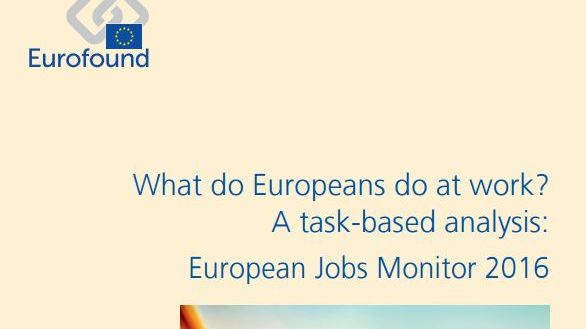
News -
What do Europeans do at work? A task-based analysis: European Jobs Monitor 2016
Europe continues its recovery from the economic slump caused by the global financial crisis in 2008, exacerbated by the euro zone single currency crisis in 2010–2011. In 2014–2015, aggregate employment levels rose faster than at any time since 2008 and over four million new jobs were created in the 28 EU Member States.
The fifth annual European Jobs Monitor report looks at employment shifts at Member State and aggregate EU level from the second quarter of 2011 to the second quarter of 2015.
It found several noteworthy trends:
- The resumption of employment growth since 2013 has been particularly reflected in increasing levels of employment in low- and mid-paid jobs, jobs where employment declines were sharpest during the two recessionary periods following 2008.
- The share of part-time work in the EU is increasing rapidly. This trend is the main component in the declining share of workers in traditional, full-time, permanent work, referred to in the report as ‘core employment’.
- There has also been a gradual closing of the gender gap, but despite the recent growth in higher-paid jobs for women being greater than that of men, women account for over two-thirds of those employed in the lowest quintile.
- Although the distribution of tasks in the working population is fundamentally structured by occupations and sectors, it can also change within the same job or occupational category. This within-job change can go in the opposite direction towards structural change, which means that a focus on the latter can be misleading.
About Eurofound
The European Foundation for the Improvement of Living and Working conditions (Eurofound) is a tripartite European Union Agency, whose role is to provide knowledge in the area of social and work-related policies. Eurofound was established in 1975 by Council Regulation (EEC) No. 1365/75.
